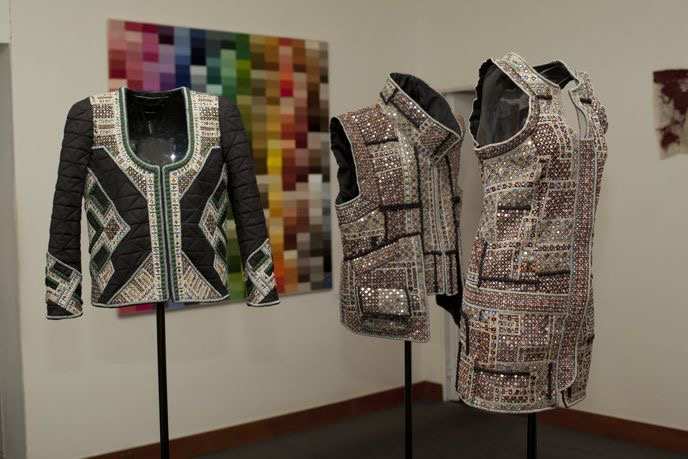
[ad_1]
 How Indian supply chains came on the map
How Indian supply chains came on the map
The Indian luxury industry has grown steadily and remarkably at a consistent rate of 18-20% per annum since 2013. And as per a report by luxuryfacts.com, the industry’s growth presumption was estimated to stand at around 10 billion USD in 2014. It was then that the boost gained momentum where the majority of manufacturing for big European luxury brands such as Dior, Chanel, Versace, and so on was directed towards Indian supply chains.
Companies like Les Ateliers 2M, founded by Maximiliano Modesti committed to the 25-year-old Kalhath Institute in India – the treasured design and trend consultants for women’s wear. The Indian players – CTM Fashions, Shevie Exports, Imaan Jaipur-Paris, and even Ateliers 2 Paris skilled their way up to the top, and fashion entrepreneurs from India and Europe noticing this, geared up to get their best creations of high-end designer pieces produced by them. It wasn’t long before dozens of artisans, hunched over yards of fabric, working day and night for creating handmade embroidery and needled embellishments for the world’s most powerful fashion brands were empowering the major fashion runways of the world.
It is a fact that many luxury brands don’t own their production facilities; they instead source talent from various countries and hire them for job work through small supply chains – this is any day considered more economical than getting all these skilled artisans from all different countries and regions under one roof.
The treaty was hushed
In 2016, there was a brilliant initiative put together by a group of luxury houses who named it the ‘Utthan pact’. It was a secretive project aiming at compliance with the parties involved – an ambitious project, rather – whose goal was to ensure the safety of factories in India, as well as uplift Indian art and embroidery. Among the ones who signed the treaty were Kering – a global luxury group managing renowned Maisons of fashion, leather goods, jewellery, and watches, and also the owners of labels including Gucci and Saint Laurent, LVMH Louis Vuitton Moët Hennessy, the owner of Fendi and Dior, and two British fashion houses: Burberry and Mulberry. The pact had an initial timeline of 3 years, but it was not a legally binding condition. The surprising fact unearthed by The New York Times was that when its journalists visited Indian factories and met and interviewed some of the artisans, they found that these karigars were usually expected to complete orders at mostly unregulated facilities that did not meet Indian factory safety laws. The newspaper observed that many workers were unaware of employment benefits or protections, and the seasonal demands when they put in unreasonable hours of overtime were in a simultaneous pattern with the latest fashion weeks taking place in Europe at the time. Upon confrontation, several factory owners confessed that it would be quite costly for them to invest in compliance standards subject to their membership in the pact. It was also reported that brands would squeeze down the payments for orders.
Luxury brands that were the signatories to Utthan chose to highlight the broader improvements made by the implementation of the pact, rather than focusing on the unresolved issues and accusations.
The darned COVID effect
Getting back to the present, add to the aforementioned the impact of Covid-19. The pandemic took hold and the work at these factories slammed to a halt. The backbone of the Indian garment supply chain quickly began to crumble as millions of migrant labourers left their jobs and scattered to go to their hometowns. Currently, the second wave is at its peak in India, with further lockdown possibilities. Many factories and artisans who were employed by the Indian supply chains for processing the orders of the big luxury houses in Europe are now struggling to adjust to a harsh, new reality. Factories are currently shut because there’s no work – it’s going back to zero now. The day labourers were paid a daily wage of around INR 200-300 or $2.50 to $4; now these people are ending up at biscuit factories doing mundane tasks, some have gone into plastics, and a few others have turned to farming. In a more stark, pitiful scenario, labourers and artisans have been reportedly trying to reach out to their employers from their villages, pleading for loans, begging for even a little bit of money to take care of their dead.
In hope of relief
The small supply chains have been in extreme suffering this past year, and now, survival seems bleak. They are in dire financial straits and 80% of them have their businesses continue to stay locked and sealed with no silver lining showing soon.
India, where the labour is cheap and the quality of intricate handiwork is very high and unique, has for long been a linchpin in the global luxury supply chain. But in the pandemic, the orders vanished overnight, and in this second onslaught, even the workshops that considered reopening are now in a quandary. For the many artisans (karigars), who are caught in this surge innocently, the immediate future for work doesn’t seem to hold a lot of potential. However, the focus needs to be shifted to health and survival now. All businesses, big and small are paying the price in this dark wave of illness, and we’ve all got to come out of it together. What’s at the forefront is winning the battles of vaccination and life, and with the charm of creativity and artistic qualities merging with the phenomenon of urbanization of the mind, we might have to wait a bit more before we can fully indulge in art and aesthetics once again.
Also read: Will consumption in ‘Bharat’ bounce back post Covid 2.0? Most definitely, yes!
[ad_2]
Source link